The Money Tree (Pachira aquatica), known as the Guiana Chestnut or Malabar Chestnut, is a beloved houseplant celebrated for its lush green foliage, braided trunk, and powerful feng shui symbolism. Revered for bringing prosperity, good luck, and positive energy, this tropical plant is a favorite in homes and offices.

At BTA Feng Shui, we guide you through comprehensive Money Tree care, its feng shui significance, and expert tips to keep it thriving indoors.
1. What is a Money Tree?
Native to the wetlands of Central and South America, the Money Tree (Pachira aquatica) thrives in swampy environments. Its common name stems from feng shui beliefs associating it with wealth and good fortune. The plant is characterized by:
- Braided Trunk: Young, flexible stems are often braided for aesthetic and symbolic appeal, believed to “lock in” prosperity.
- Leaves: Palmate leaves with 5-7 leaflets per stem, symbolizing the five feng shui elements (Metal, Wood, Water, Fire, Earth).
- Growth: Indoors, it grows 6-8 feet tall; in the wild, it can reach 60 feet, blooming with yellowish-white flowers and producing seed pods with edible nuts.
- Other Names: Guiana Chestnut, Malabar Chestnut, or Fortune Tree.
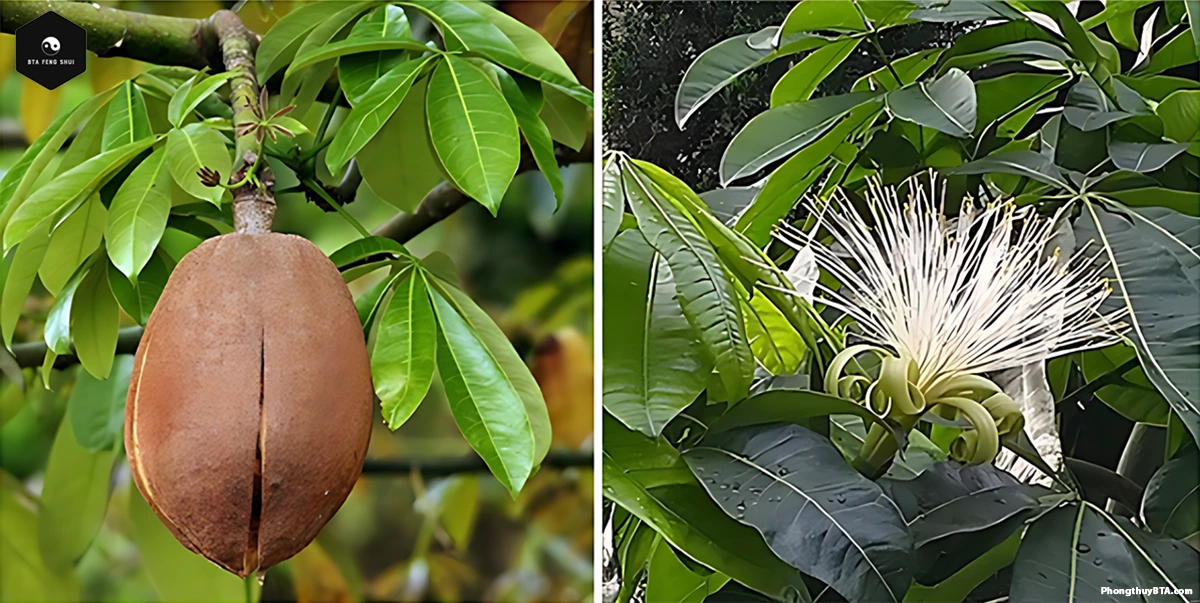
Money Trees feature glossy green leaves and a distinctive braided trunk, making them visually striking. Indoor plants rarely flower, but their vibrant foliage adds elegance to any space.
2. Feng Shui Significance of the Money Tree
Symbolism of Prosperity
In feng shui, the Money Tree is a powerful symbol of wealth, luck, and positive energy:
- Braided Trunk: Represents unity and strength, trapping good fortune within its folds.
- Five-Leaf Structure: Each leaf cluster mirrors the five elements, promoting balance and harmony.
- Number of Stems:
- One Stem (Pillar of Heaven): Symbolizes resilience and stability, ideal for workspaces.
- Three Stems (Fortune, Prosperity, Longevity): Represents harmony in time, place, and people.
- Five Stems (Five Blessings): Embodies health, wealth, longevity, peace, and prosperity.
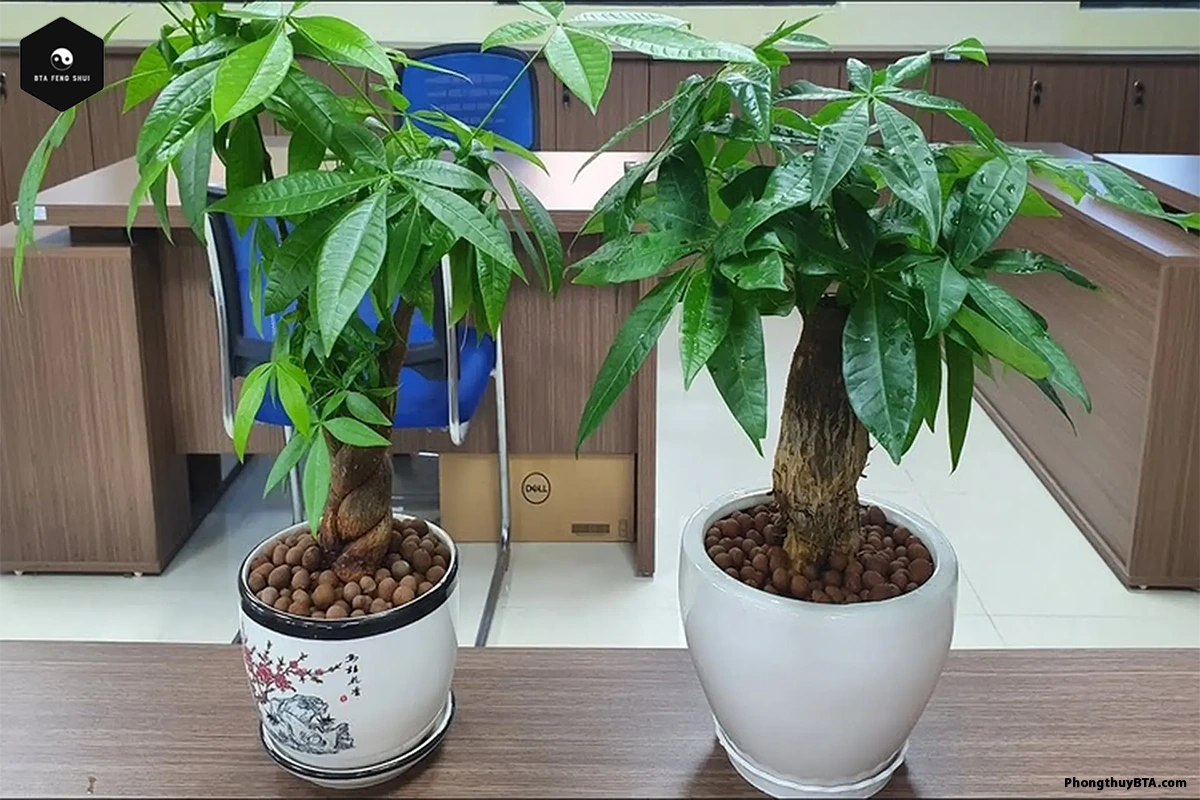
Placement for Optimal Feng Shui
To maximize its benefits, place the Money Tree in:
- Wealth Corner (Southeast): Enhances financial prosperity, as this direction aligns with the Wood element.
- Workspaces or Cash Registers: Attracts success and abundance in business.
- Living Rooms: Promotes harmony and positive energy flow.
Avoid placing near bathrooms or cluttered areas, as these disrupt the plant’s positive chi.
Which Zodiac Signs Are Most Compatible with the Money Tree?
The Money Tree suits people of all zodiac signs, but it is especially beneficial for:
- Dog: Particularly helpful for those born in the years of the Earth Dog (1958) and Wood Dog (1994). It promotes calmness, reduces impulsiveness, and supports smooth career development.
- Monkey: Supports individuals born in the years of the Metal Monkey (1980) and Water Monkey (1992) by helping protect their assets and enhancing financial prosperity.
- Rat: Brings opportunities and luck in investment and business to those born in the years of the Metal Rat (1960) and Water Rat (1972).
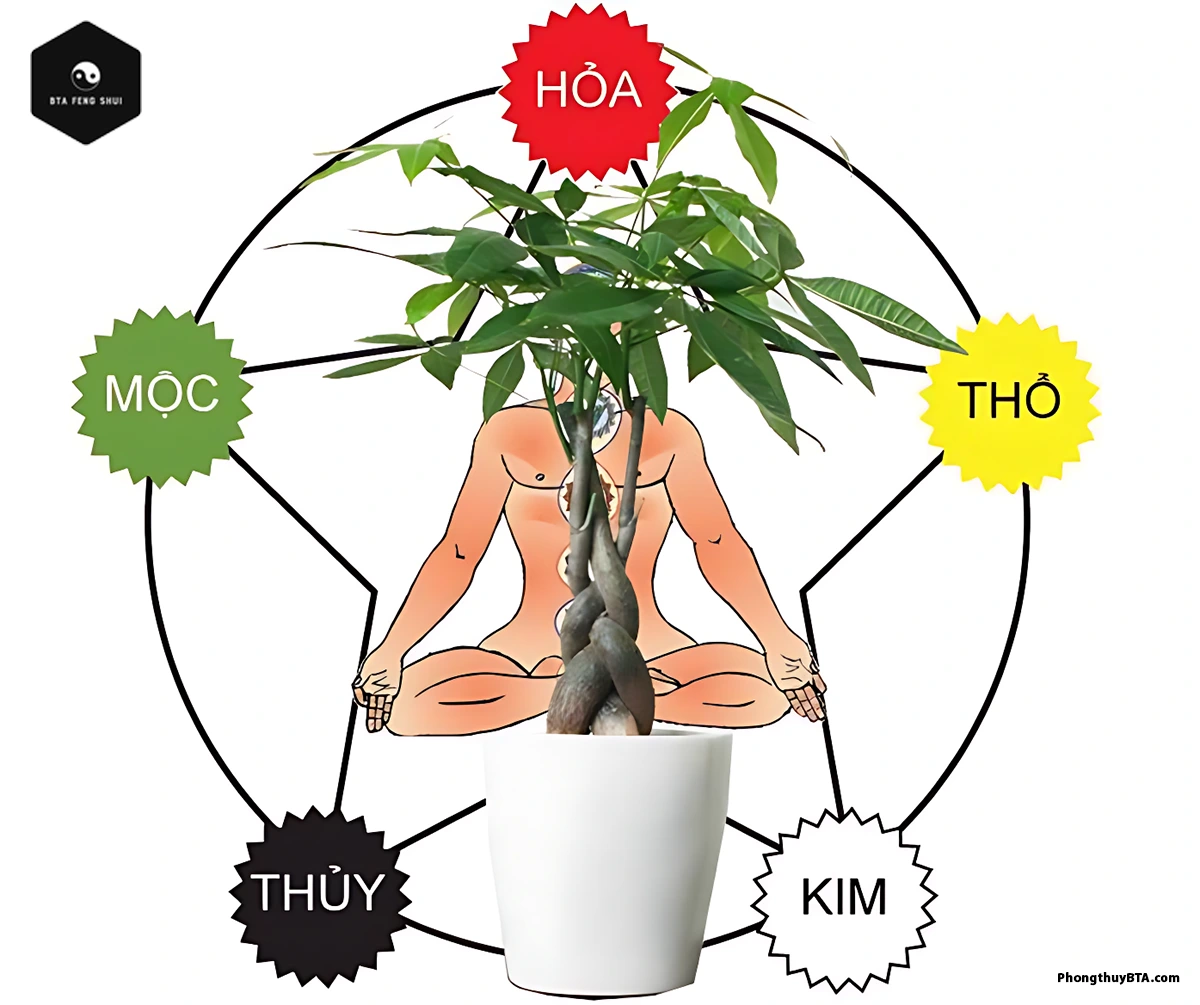
The Money Tree helps improve personality weaknesses and guides these zodiac signs toward the right path to success.
Practical Benefits
Beyond feng shui, Money Trees:
- Purify air by increasing oxygen levels.
- Repel insects like mosquitoes.
- Serve as thoughtful gifts for housewarmings or business openings.
3. How to Care for a Money Tree
Light Requirements
Money Trees thrive in bright, indirect light for at least 6 hours daily:
- Place near a sunny window with filtered light or use sheer curtains to diffuse direct sunlight.
- Too much sun scorches leaves; too little causes yellowing or leggy growth.
- Pro Tip: Rotate the plant every 2 weeks for even growth. If natural light is limited, use a grow light.
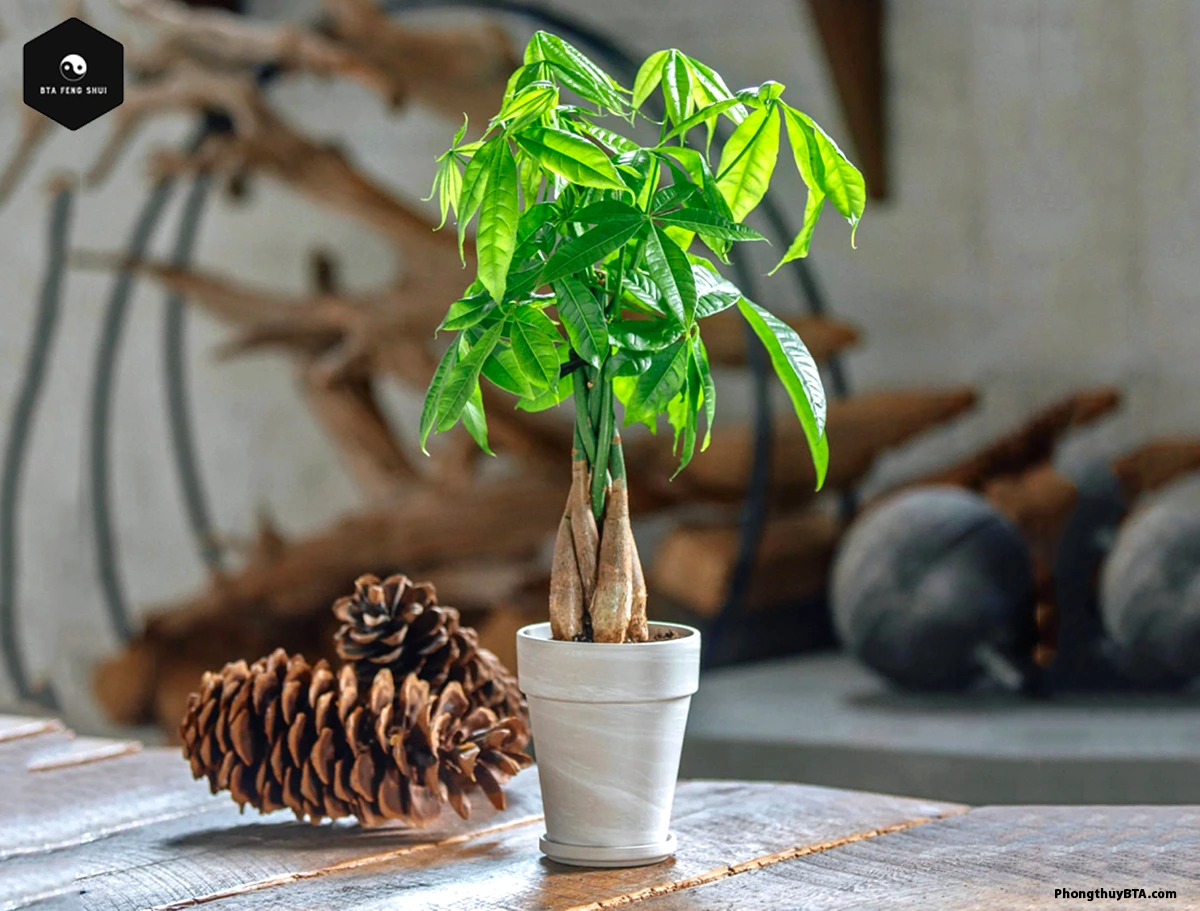
Watering
Water when the top 1-2 inches of soil feel dry, typically every 1-2 weeks:
- Indoor: Water thoroughly until excess drains, then empty the saucer to prevent root rot.
- Outdoor: Water less frequently, about every 1.5 weeks, ensuring proper drainage.
- Pro Tip: Use room-temperature water and avoid overwatering, which leads to soggy soil and root issues.
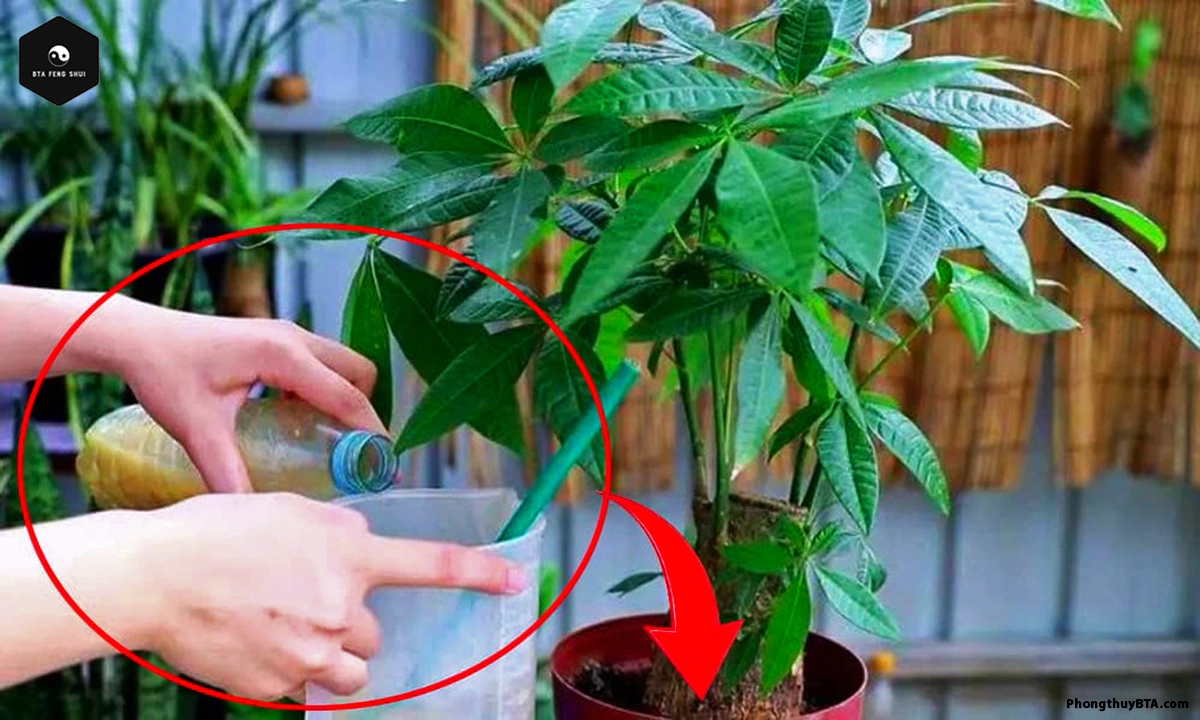
Soil
Choose a well-draining, nutrient-rich potting mix:
- A peat-moss-based mix with a pH of 6.0-7.5 is ideal.
- Add perlite or sand for better drainage.
- Best Soil: Miracle-Gro® Indoor Potting Mix or a blend of potting soil, peat moss, and perlite.
Temperature and Humidity
- Temperature: Keep between 65-80°F (18-27°C). Avoid drafts, vents, or sudden temperature changes.
- Humidity: Money Trees prefer moderate humidity (30-50%). In dry climates, use a humidifier, place a pebble tray with water beneath the pot, or group with other plants. Avoid misting, as it’s ineffective for sustained humidity.
Fertilizing
Feed monthly during spring and summer with a balanced, water-soluble fertilizer (e.g., 10-10-10) diluted to half strength. Skip fertilizing in fall and winter when growth slows.
Potting and Repotting
- Pot: Choose a pot with drainage holes, 1-2 inches larger than the root ball.
- Repotting: Repot every 1-2 years or when roots emerge from drainage holes. Refresh soil to replenish nutrients and support growth.
4. Braiding and Pruning
Braiding a Money Tree
Braiding enhances aesthetic and feng shui appeal:
- Select 3-5 young, flexible stems at least 14 inches long.
- Gently braid loosely from the base, securing the top with twine or garden tape.
- Repot and place in partial shade for a month to reduce stress.
- Remove ties after a few months as the braid sets.
- Use stakes for stability if needed.
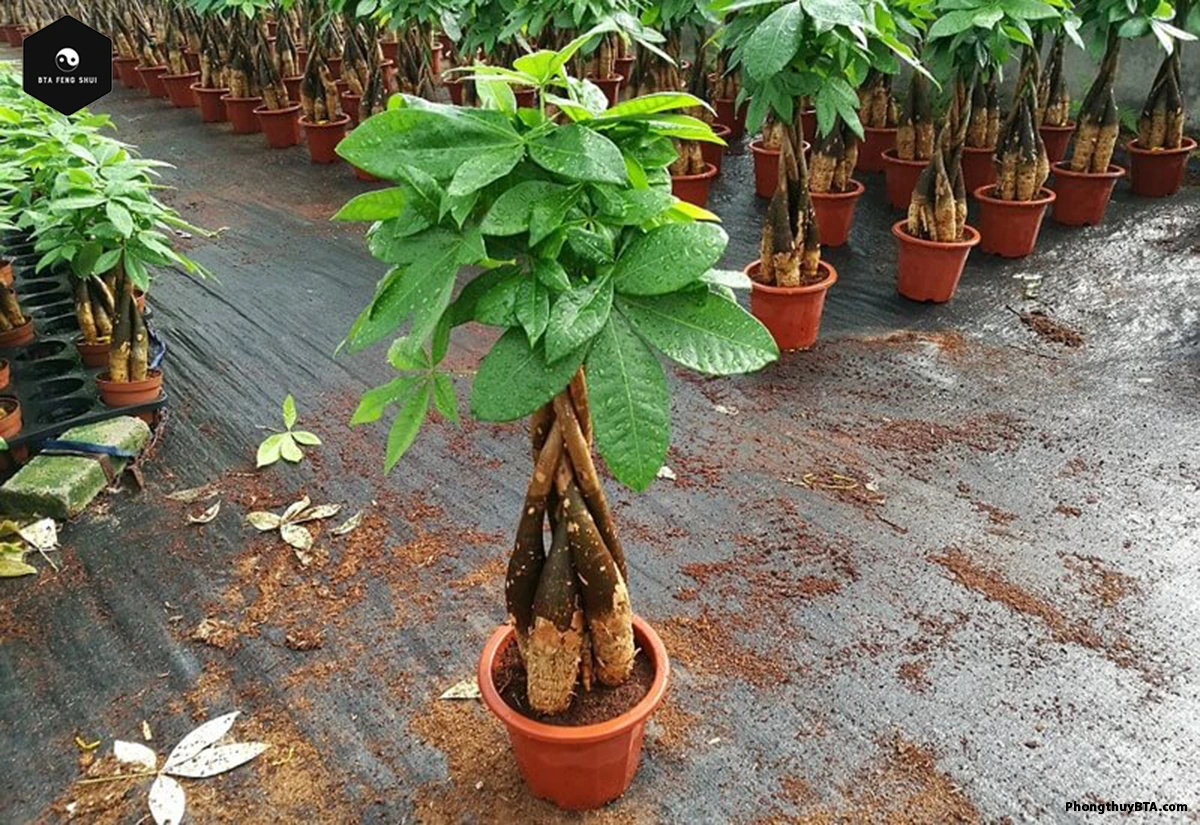
Pruning
- Remove yellow, brown, or dead leaves to encourage new growth.
- For a bonsai look, trim top leaves to control height.
- Prune in winter when growth is slower to minimize stress.
5. Propagating a Money Tree
Propagate in spring or summer for best results:
- Cuttings: Take a 4-6 inch cutting with 2-3 nodes and a few leaves.
- Remove lower leaves and place in water or a rooting medium (peat moss, perlite, or sand).
- Keep moist and in indirect light until roots form (2-4 weeks).
- Transplant into a pot with well-draining soil.
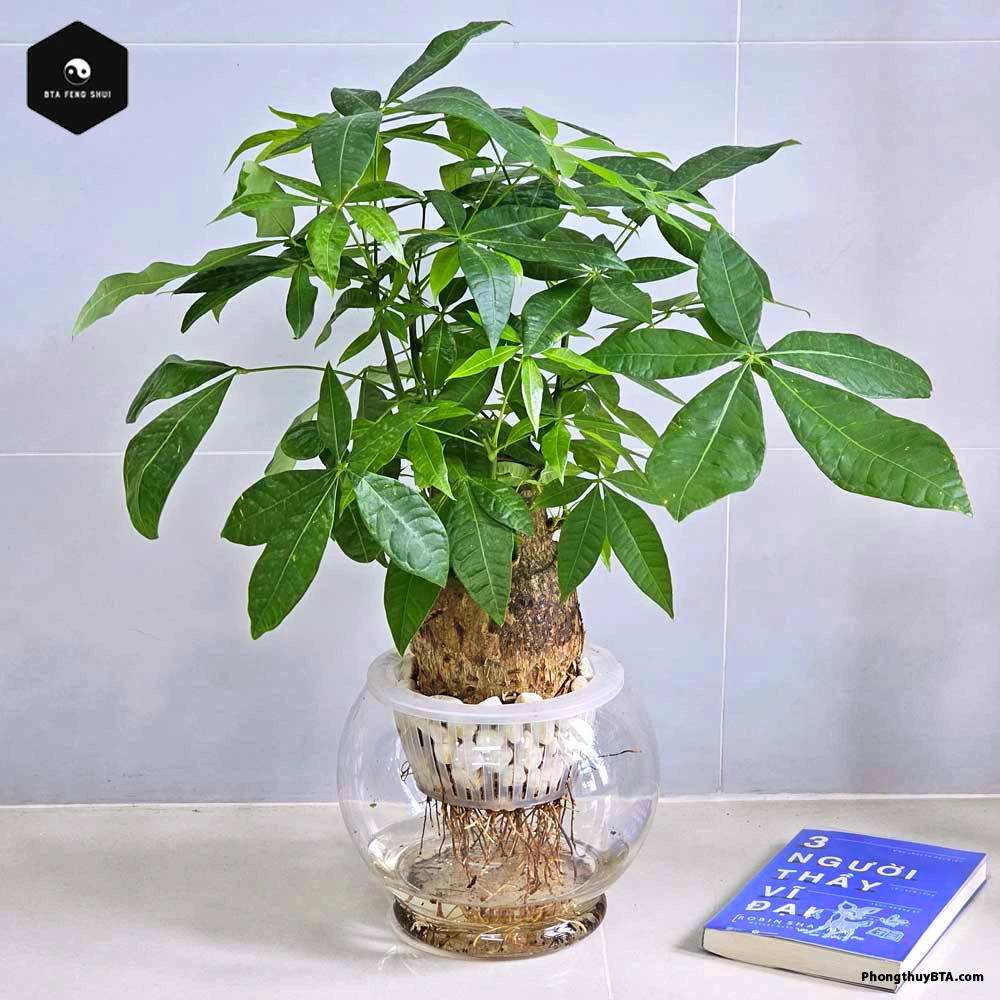
6. Common Problems and Solutions
Soft or Mushy Stems
- Cause: Overwatering causing root rot.
- Solution: Inspect roots, trim mushy parts, and repot in fresh, well-draining soil.
Yellow or Brown Leaves
- Cause: Overwatering, underwatering, or improper light.
- Solution: Check soil moisture, adjust watering, and move to a spot with bright, indirect light.
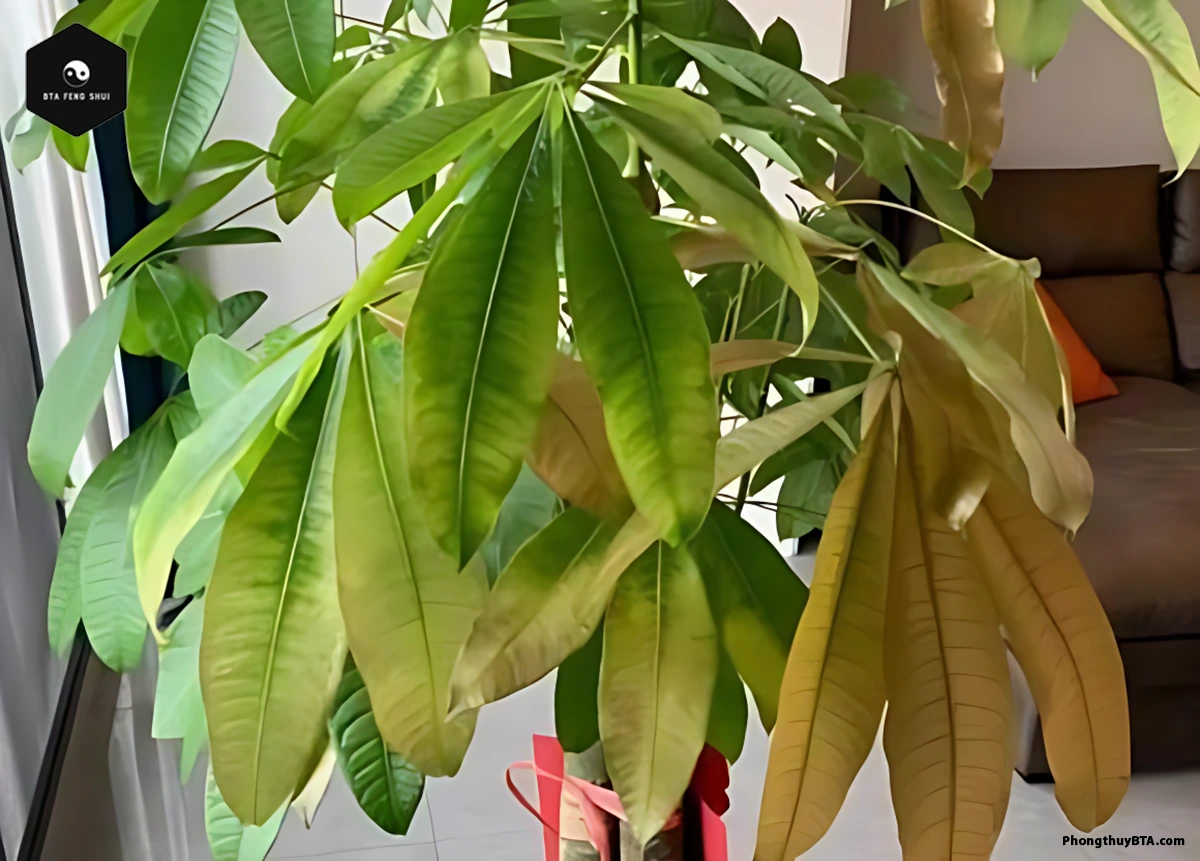
Leggy Growth
- Cause: Insufficient light.
- Solution: Move to a brighter location or use a grow light.
Pests
- Common Pests: Mealybugs, scale, or spider mites.
- Solution: Treat with neem oil or mild insecticide, and isolate the plant to prevent spread.
7. Money Tree Size and Lifespan
- Indoor Size: Typically 6-8 feet tall, but can be kept smaller with pruning.
- Wild Size: Up to 60 feet in natural habitats.
- Lifespan: With proper care, Money Trees can live 10-15 years indoors, sometimes longer.
8. Buying and Pricing
- Small Plants (under 30cm): $5-$15.
- Braided or Medium Plants: $20-$50.
- Large or Ornamental Trees: $50-$150, with decorative pots or gold-plated designs up to $500.
- Where to Buy: Local nurseries, garden centers, or online platforms like Amazon, Etsy, or specialized plant shops.
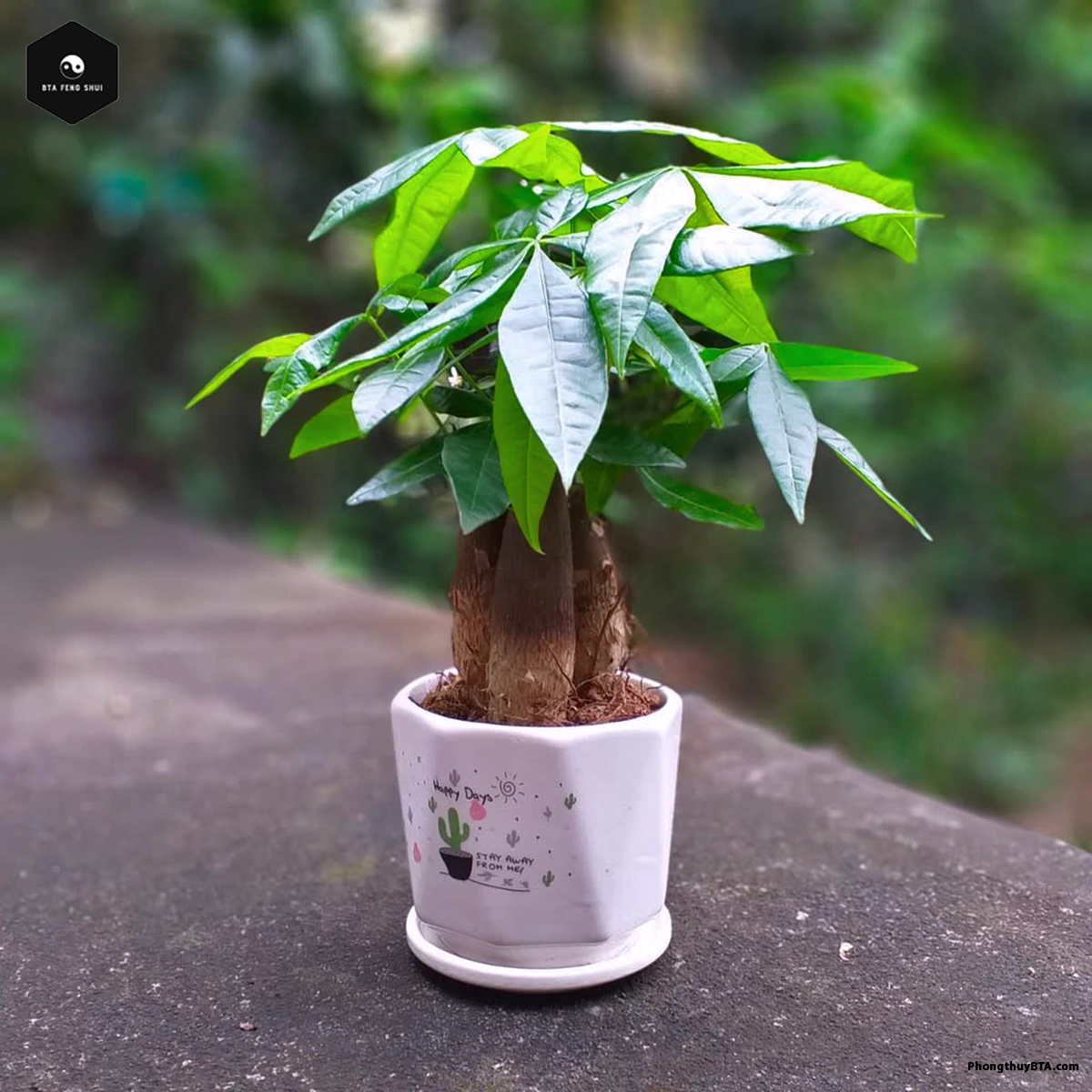
9. FAQs
Is the Money Tree Toxic?
Money Trees are non-toxic to pets and humans, making them safe for households with children, cats, or dogs. However, consuming leaves may cause mild digestive upset, so keep out of reach of curious pets.
How Often Should I Water My Money Tree?
Water every 1-2 weeks when the top 1-2 inches of soil are dry. Adjust based on season and humidity.
Does a Money Tree Need Sunlight?
Yes, it needs bright, indirect light for 6+ hours daily. Avoid direct sunlight to prevent leaf burn.
Can Money Trees Flower Indoors?
Rarely, as they require pollination by bats in the wild. Indoor plants focus on foliage.
The Money Tree isn’t just a pretty plant—it’s a feng shui symbol of wealth and harmony. With bright indirect light, good drainage, and moderate watering, it can thrive for years. Whether you’re new to plants or a seasoned grower, BTA Feng Shui’s guide will help you care for it and boost your home’s energy.
If you found this helpful, please give it 5 stars and share the feng shui wisdom!
























